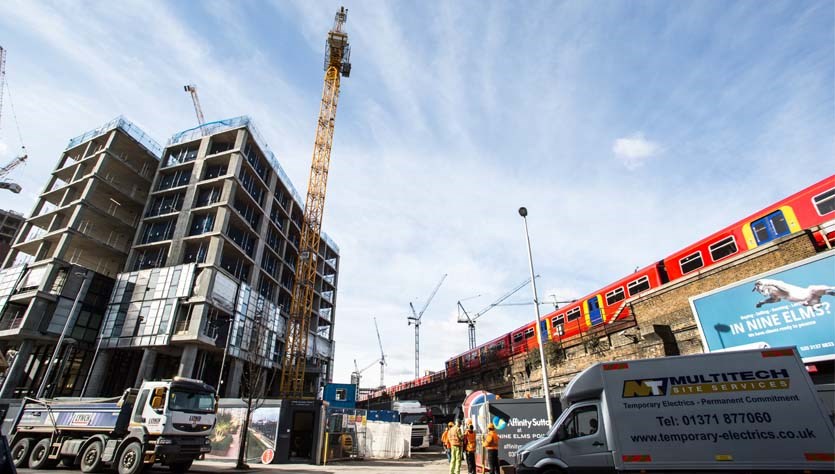Nine Elms Point is one of the highest profile developments in the Nine Elms Opportunity Area and Vital Energi have worked in partnership with Barratt London to help deliver their vision of a vibrant and sustainable community.
The Nine Elms Opportunity Area is one of the most exciting and largest regeneration projects in Europe, stretching over 3km along the south side of the Thames. At its heart is Nine Elms Point, a 647-home development, located on Wandsworth Road, sitting above the new Sainsbury’s flagship superstore.
Barratt London have a commitment to create sustainable, low-carbon communities and Vital Energi worked with their professional team to deliver a complete energy system which would be resilient, meet all of London’s strict planning legislation and be “future proofed” to allow easy connection to any nearby future heat networks which are being developed.

The Nine Elms Point energy scheme will supply seven residential tower blocks, the highest of which is 37 storeys, with three of these blocks also receiving cooling services. In addition to the residential component, the energy centre will also service the Sainsbury’s flagship megastore and 19 retail and office spaces. The scope of works included installing the main energy centre and substations, a chiller plant room with a cooling substation, low temperature hot water (LTHW) and chilled water services with risers and laterals, Heat Interface Units (HIUs) and Cooling Interface Units (CIUs) and a separate heat exchanger to supply the Sainsbury’s megastore.
The main 6MW energy centre will be supplying 647 dwellings with heat, hot water and electricity and includes five 1200kw gas boilers and a 425kWe Combined Heat and Power engine (CHP) which will run constantly and supply electricity to Sainsbury’s. The system also has two thermal stores with a combined capacity of 60,000 litres. In addition, the separate chiller plant room will include four 460kW water cooled chillers with a combined capacity of 1890kW and three roof-level 850kW dry air coolers and a 5000L thermal store.